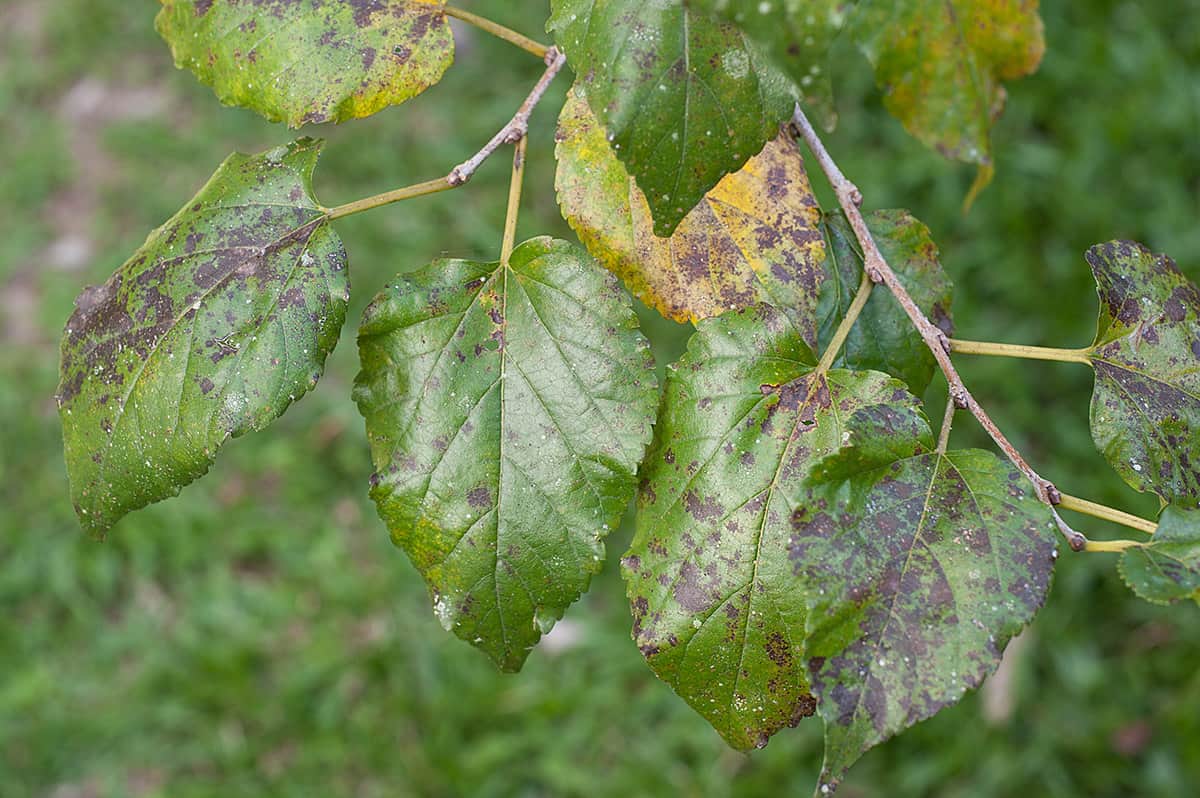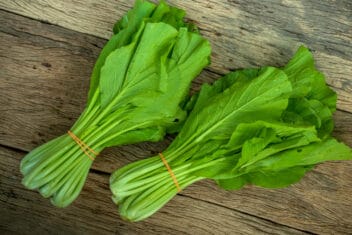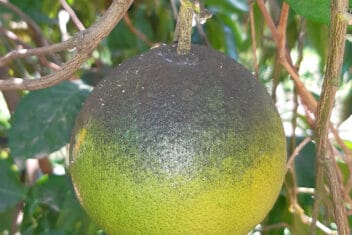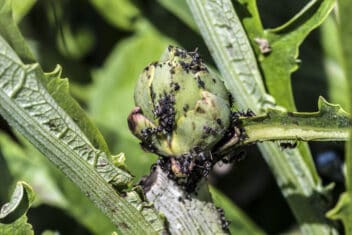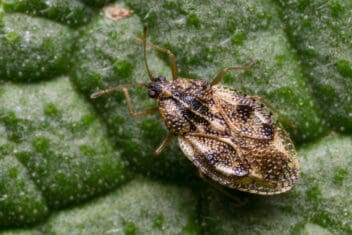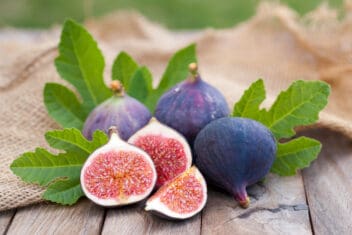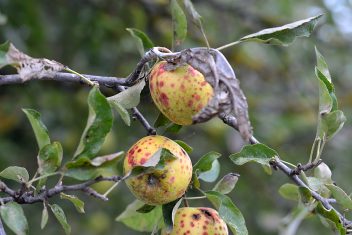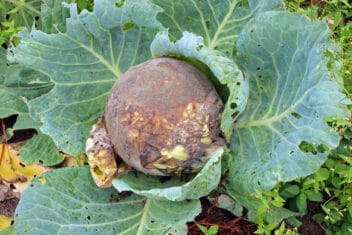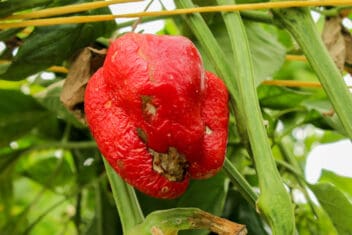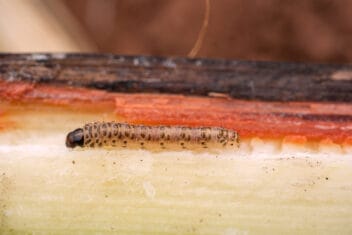Our large, 30-year-old mulberry tree is one of the prized parts of our homestead, producing over 50-gallons of berries each year. These large, deciduous trees rarely have issues, but if you have one on your property, you need to know the potential mulberry tree pests and diseases to watch for – just in case.
Thankfully, most mulberry tree pests and diseases are minimal and minor, causing small issues that you can handle with pruning or sprays. That doesn’t mean you should ignore the problem – no way! Ignoring pests or diseases leads to bigger problems.
So, let’s take a look at some of the most common mulberry tree pests and diseases that you could encounter.
5 Mulberry Tree Pests
While these trees don’t have as many problems as other fruit trees, you should still know the common mulberry tree pests to watch for.
1. Fall Webworm
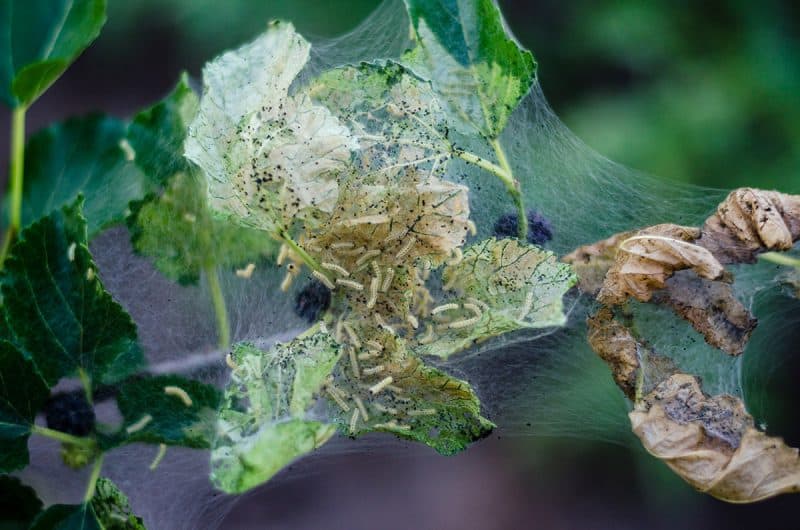
This mulberry tree pest is one that you might not have heard of before, but they’re a common yellow or green caterpillar with a broad, bumpy stripe down their body and a dark head. The adult form is a white moth with dark wing spots. The larvae spin nests at the end of tree branches.
When your tree has a large fall webworm infestation, these pests can eat a lot of leaves, but since they only attack at the end of the growing season, they don’t generally cause any real damage; it’s mostly just cosmetic. So, what can you do if your mulberry tree has fall webworms?
If you have a small tree, sweeping the nests away might be effective enough to take control away from these pests. Webworms also have many natural predators that can be released in your garden, like lady beetles and parasitic wasps. Gardeners can use Bacillus thuringiensis, particularly when it’s applied to the foliage when the webworms are young.
2. Glassy-Winged Sharpshooter
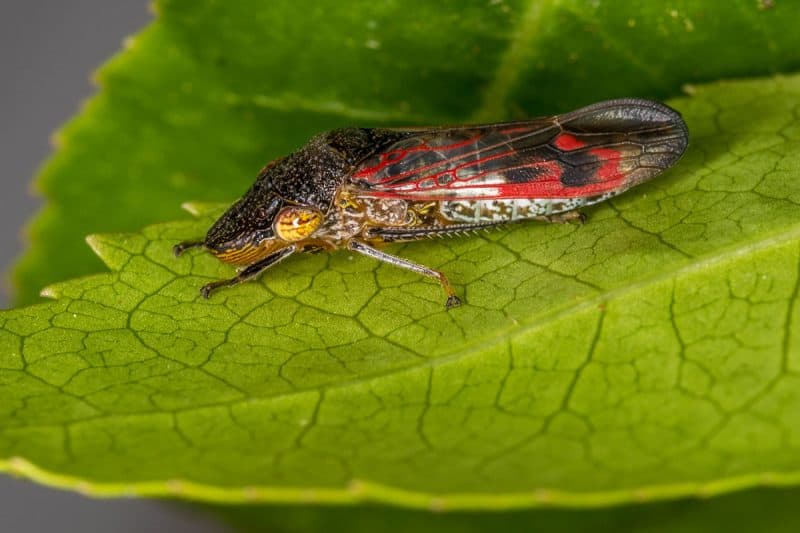
Another one of the common mulberry tree pests is called the glassy-winged sharpshooter, which is a 1/2 inch long, dark brown leafhopper that feeds on the sap of your trees. Typically, these pests don’t cause serious damage from directly feeding on the plants, but they excrete liquid on the plants that can cause problems.
The biggest reason why you don’t want glassy-winged sharpshooters on your mulberry tree is that they cause a bacterium called Xyella fastidious, which leads to a range of plant diseases, like mulberry leaf scorch.
Unfortunately, there is no way to completely get rid of glassy-winged sharpshooters. Inviting natural predators like parasitic wasps into your garden is an effective way to control the population, and you also can apply a few applications of insecticidal soap.
3. Mealybugs
You might encourage mealybugs in your garden. These insects have a grayish-to-pink body with a waxy coating. Mealybugs tend to form in groups as they feed on your plants, excreting honeydew and reducing the growth of your plant.
Typically, releasing natural enemies in your garden to take care of your mealybugs problem. You also can knock them off your plant with a strong blast of water, or try an insecticidal soap. Keeping your trees healthy is a good way to ensure your mulberry trees can tolerate a mealybug feeding.
4. Scales
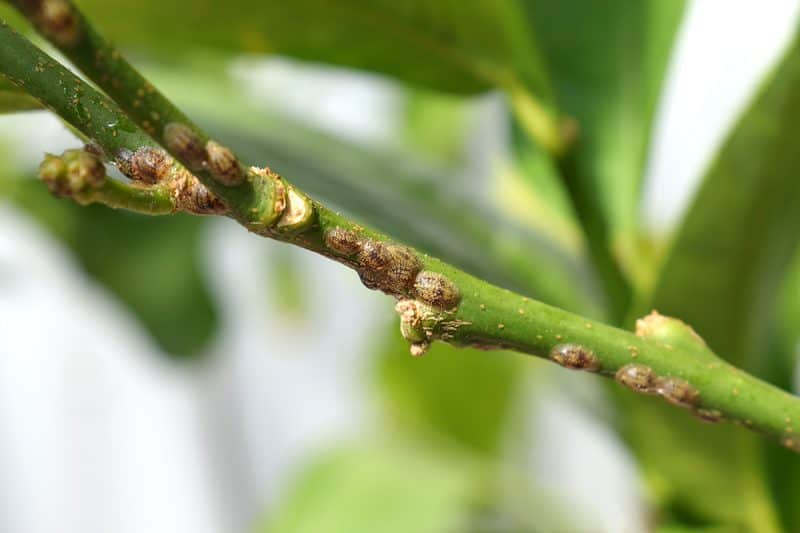
One of the most common mulberry tree pests is scales; these trees experience California red scale, oleander scale, and San Jose scales, all of which are armored scale insects that feed on the juices of your tree. At first, it’s a bit harder to spot these pests; they look like small bumps on the leaves or bark of your tree.
Scales typically don’t cause serious damage unless you have a large infestation. If this happens, you’ll see leaf wilting, yellowing, and premature dropping of the leaves. Large infestations of scales cause the bark to crack and exude gum.
Typically, proper gardening techniques like adequate water and pruning the infested parts of the tree will take care of an infestation. You also can encourage enemies like ladybugs to visit. Take a look at our guide to getting rid of scales in your garden.
5. Whiteflies
Mulberry trees are vulnerable to two different kinds of whiteflies: the giant whitefly and the mulberry whitefly. These pests both like to congregate on lower leaf surfaces, and you can easily spot them because the adults have a white, waxy cover on their wings and bodies.
The problem with whiteflies is that they suck plant juices from the leaves and secrete honeydew on your tree. A bad infestation leads to leaf yellow and dropping, and when it’s warm outside, you’ll notice the whitefly population exploding.
Unfortunately, insecticides aren’t truly effective against these pests. Take a look at how to get rid of whiteflies in your garden; these work on your mulberry tree as well!
7 Mulberry Tree Diseases
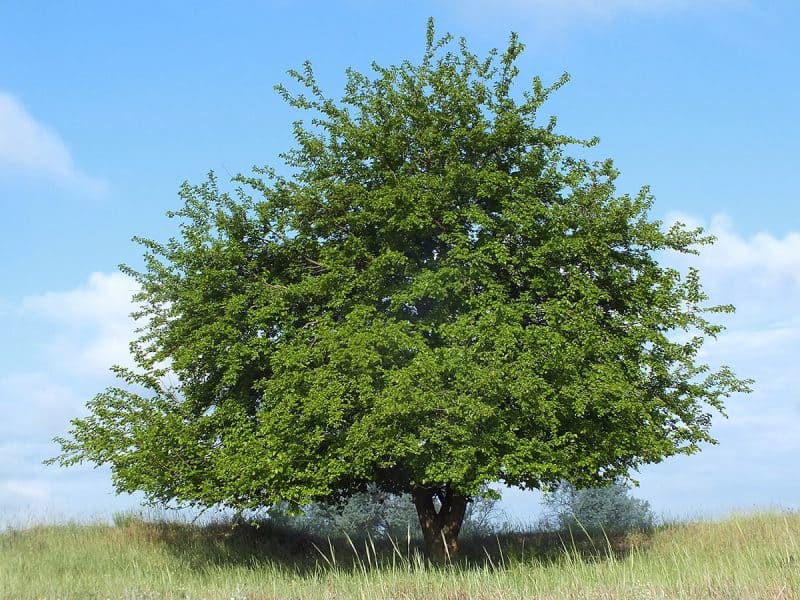
These diseases can wreak havoc on your trees, potentially killing them or destroying all of your harvest. So, keep a close eye out for any problems.
1. Armillaria Root Rot
Armillaria root rot is a fungal disease that causes discolored leaves that drop off the tree prematurely. This disease can cause the death of branches or the entire tree.
Unfortunately, controlling armillary root rot is extremely difficult, which is why you have to make sure you only plant disease-free stock. If you know that this disease was present recently, make sure you don’t plant anything there for a while.
If your mulberry tree becomes infested with armillaria root rot, it has to be dug up and removed from your fruit orchard. Fungicides won’t work for this, nor do any control methods.
2. Bacterial Blight
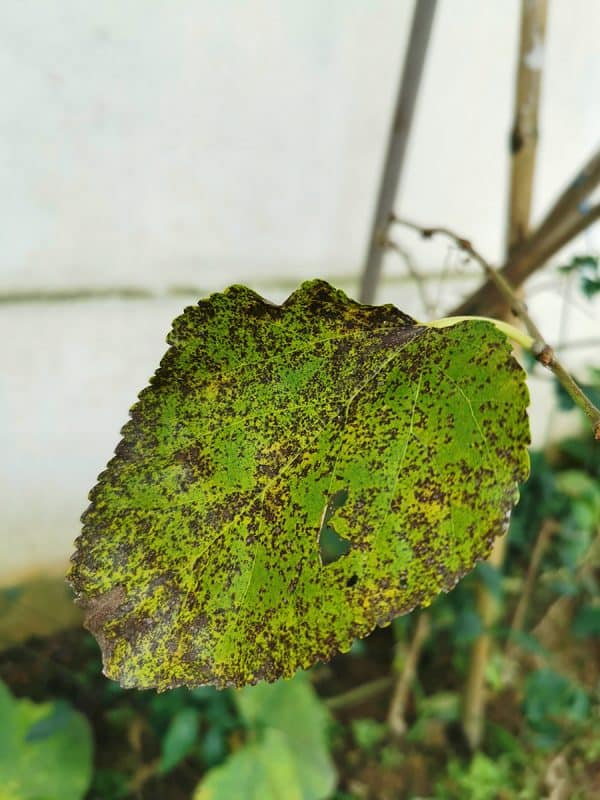
Another mulberry tree disease that your tree might experience is bacterial blight. This bacterial disease causes small, black, angular leaves and brown spots on the leaves, fruits, or flowers.
This bacteria tends to appear when there is poor air circulation around the branches of your tree and wet foliage. That’s a recipe for disaster. Sometimes, the branches can be pruned and the tree saved, but if it’s a severe infestation, chances are the tree will need to go.
Take a look at our guide to handling bacterial blight.
3. Canker
If your mulberry tree has wilted leaves and peeling bark, you might have bacterial canker on your tree. It also causes black masses of spores in the infected areas and eventually dieback in the tree branches.
Typically, the best way to handle canker is to prune the infected branches. Always make sure you clean pruning trees because this mulberry tree disease spreads easily.
4. Cotton Root Rot
This disease goes by several names, including Phymatotrichum root rot, Texas root rot, and Ozonium root rot. Regardless of the name, it’s all the same disease.
Cotton root rot causes the leaves on your tree to turn yellow or bronze and to wilt. The disease causes the roots to rot – surprise! – while the wilted leaves remain attached to the tree. It causes the sudden decline and death of your mulberry trees – and we mean sudden. Trees can die in a matter of weeks.
The problem is that, by the time cotton root rot shows signs of the disease, it has already spread throughout the entire root system in your tree. There’s no cure and you’ll need to remove the tree to avoid spreading the disease. It also lives in the soil, so don’t plant any susceptible plants there for at least five years.
White mulberries are the most susceptible.
5. False Mildew
If you live in the southern states, your tree might face an attack of false mildew, which is a fungal disease. False mildew typically appears in July, causing whitish patches on the underside of the leaves. Then, yellow sports come out from the underside and spread out, causing a cobweb-like coating that looks similar to powdery mildew.
That’s why it’s called false mildew!
This isn’t powdery mildew, but gardeners often mistake it for that. The infected leaves fall to the ground, so it spreads easily. Make sure you gather up all of these materials and burn them. To control false mildew, spray your trees with a fungicide that says it works for false mildew. Spraying as soon as it appears for the best result.
6. Popcorn Disease
Here is one of the strangest mulberry tree diseases. It causes the fruits to become large and extended; the fruits end up with a popcorn-like appearance that interferes with your harvest. This disease happens only in southern states.
You have to make sure to pick and discard all of the infected fruits, including any fallen berries and debris. Popcorn disease spreads easily, so you want to make sure you take efforts to stop it. Thankfully, it won’t kill your tree, but the fruits will look a bit unsightly.
7. Powdery Mildew
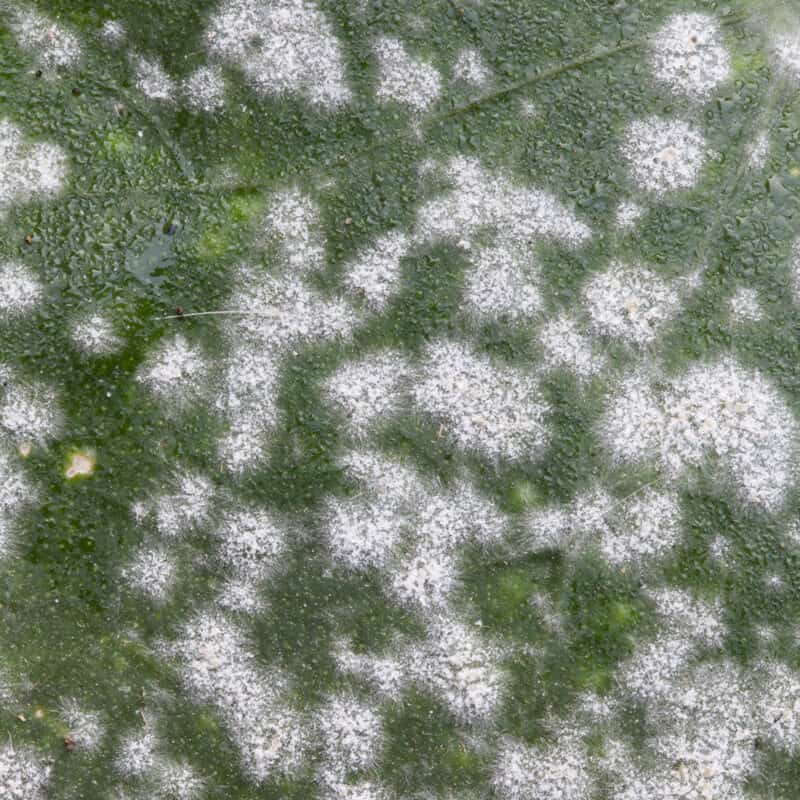
Powdery mildew is a common garden fungal disease that spreads easily. It causes a whitish-gray, powdery mold on the leaves, buds, and twigs of your mulberry tree. This disease also causes the leaves to crinkle and curl upward, and new shoots may have stunted growth.
Our comprehensive guide will help you identify and stop this extremely common problem.
